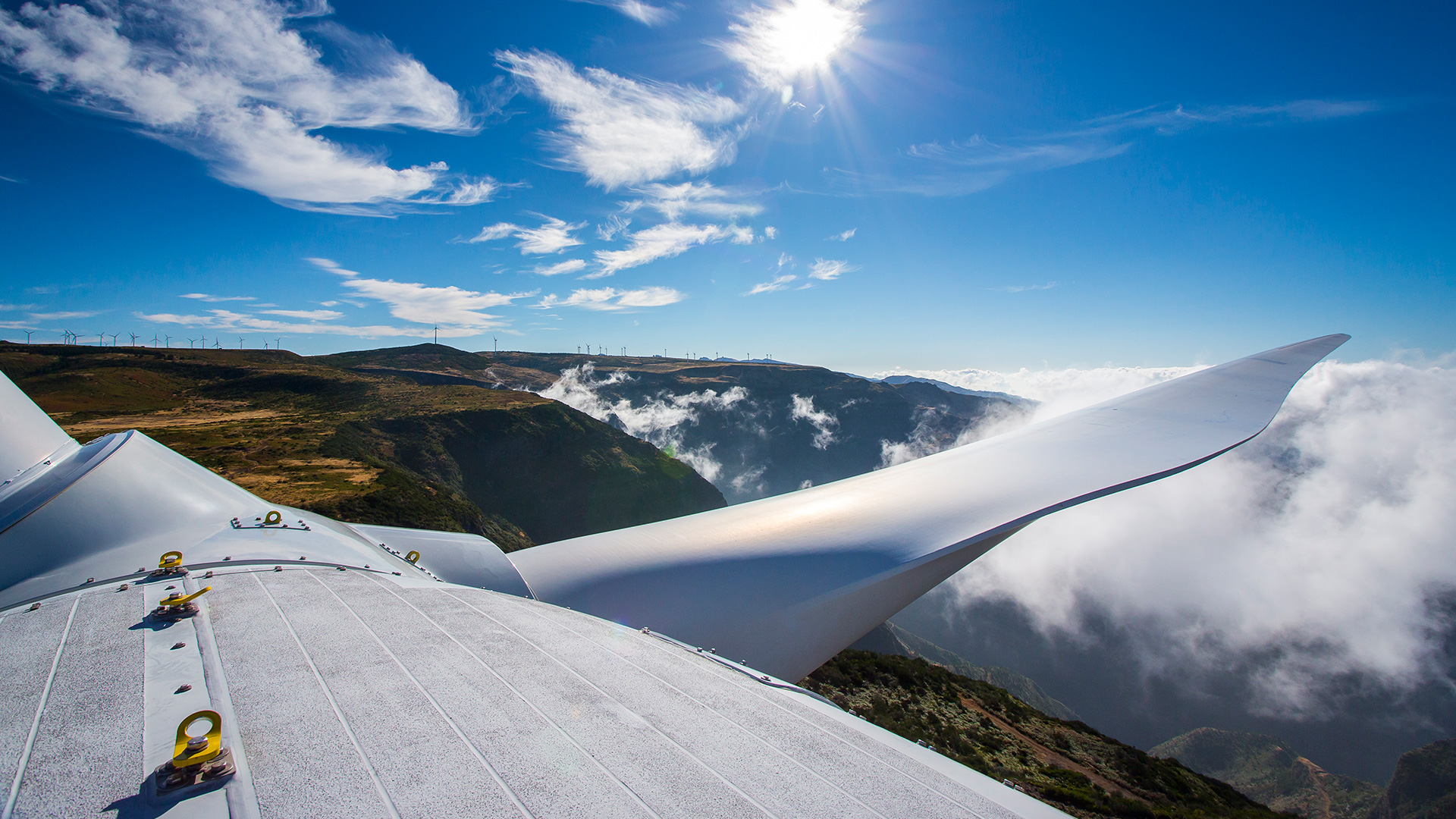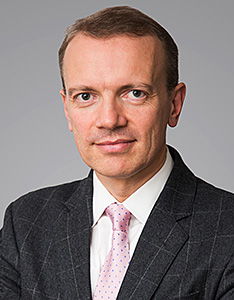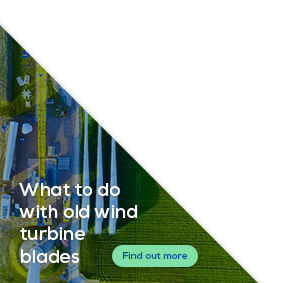Brussels Brief
Brussels Brief November 2016

2 November 2016

Giles Dickson
Electrification key to unlock new wind investments
CEO foreword
A decarbonised world powered by renewables is impossible without the electrification of society, notably of transport, heating and cooling.
We’re doing a reasonable job getting renewables into electricity consumption – 29% of power consumed now in Europe and due to rise to 50% by 2030. But we’re doing less well getting renewables into transport, heating and cooling.
There are two challenges: replacing the fossil fuels in transport and heating by electricity; and making sure it’s clean electricity. The EU is on our side. They want CO2 emissions from transport to fall by 70% in 2050. This represents a huge opportunity for the wind industry. And it’s our best bet for reversing the slow decline in electricity demand in Europe.
Energy use in transport is 94% oil. Electric vehicles are starting to look viable. Roll-out on a mass scale would dramatically increase power demand to the tune of 100TWh annually. By 2040, between 35%-40% of all new cars worldwide will be electric, according to the IEA. Consumers and governments will be looking to renewables such as wind energy to provide this power.
This switch is already happening in some places. In Belgium, 5% of all passenger trains were powered by wind energy in 2015. In the Netherlands wind provides 50% of the energy needed to run the rail network. By 2018, it will run 100% on wind power.
The residential sector also holds huge potential for electrification. Electricity supply through clean, indigenous sources could play a bigger role here through heat pumps, smart technologies and energy consuming appliances.
It’s time to start looking beyond current demand in the power sector by integrating heating, cooling and transport into the electricity supply. Renewables can provide the solution to decarbonisation efforts, particularly in urban areas. This is a major part of the global energy transition.
In Europe, residential and transport electrification could also provide an outlet for energy systems coping with overcapacity. This is a common challenge facing many European countries, contributing to very low wholesale power prices. Moreover, electrification would encourage domestic and industrial consumers to take a more active role in consumption through demand-side response.
In a month’s time the European Commission will table proposals for a new EU Renewables Directive and a new design of Europe’s electricity markets. There is unlikely to be much on electrification in this “Renewables Package”. But a number of regulatory barriers are holding up the electrification of transport and heating. Policymakers should tackle these and ensure that its renewable electricity we’re getting into these sectors.
Reviving the EU market for wind energy includes looking beyond the current power system. To secure a continuous and sustainable deployment of wind energy, new sources of demand for clean electricity will be crucial.
COP22

COP22: implementation is the key word
When diplomats arrive in Marrakech for the next round of UN climate talks, they know it will get off to a good start. Only a few days before COP22’s opening ceremony, the Paris Agreement will formally enter into force. The speed at which countries have made this possible is unprecedented. This will give diplomats some extra wind in their sails. And they might need it.
From November 7 onwards, countries have two weeks to tackle a number of critical issues. How will countries transform climate commitments into policy frameworks? What further financing is needed? How to review national climate contributions and scale up ambition?
So as the Paris Agreement enters into force, it’s time for countries to flesh out the rules, guidelines and processes that govern it. Implementation will be the key word in Marrakech. As Moroccan Foreign Affairs Minister and COP22 President Salaheddine Mezouar said: “this summit is the time to move from words to action for countries to achieve national climate targets.”
WindEurope will be in Marrakech to represent the European wind energy industry at COP22. We will promote the benefits that wind energy brings to both mature and developing economies. And when liaising with country representatives, we will outline how policy frameworks can enable new investments in wind energy. On 16 November, WindEurope hosts a side event in the EU pavilion on Innovative finance: boosting renewable energy investments in emerging markets.
Members’ success

A new cost efficient storage solution for wind energy
Last September, Siemens, the Technical University of Hamburg (TUHH) and the urban utility company Hamburg Energie presented a very promising thermal energy storage system for wind energy. The technology could become a key enabler for facilitating onsite balancing of wind power.
The new concept, named Future Energy Storage (FES), consists in storing energy under the form of heat contained in a rock fill at temperatures over 600 degrees Celsius. When charging, a fan uses an electrically heated airflow to heat the stones. When discharging, the hot stones heat the air, which then heats a steam boiler to drive a power generator via a steam turbine. The arrangement of the rock fill and the shape of the surrounding insulating container are crucial to make charging and discharging efficient.
The companies are currently testing a full size FES at the Trimet aluminium site in Hamburg-Altenwerder. The system is able to store around 36 MWh in a container of around 2,000 m3 of rock and it will be able to deliver 1.5 MW of power.
Whereas many other storage solutions have high costs or limited storage capacities, the FES technology can be sized for different output levels, therefore remaining economical. The only limit to the concept is the space required for the rock-filled insulated container.
The FES concept received research funding from the German Federal Ministry for Economic Affairs and Energy.
New members

Nord-Lock Group
The Nord-Lock Group is a world leader in secure bolting solutions, providing a unique combination of innovative technologies and expertise that enables solving the toughest bolting challenges. Nord-Lock bolting solutions include multifunctional wedge-locking technology, wedge-locking technology, Superbolt tensioners and Expansion bolts, Boltight hydraulic tensioning system and Expander pivot technology.
The Nord-Lock Group is active in the wind energy industry providing state-of-the-art solutions that can withstand enormous pressure in extreme conditions. No matter the size or the scope, every generator and turbine is riddled with bolted connections. Solutions that can be applied quickly and easily, offer huge advantages in terms of saving time and resources. Diminishing natural resources and demands for clean renewable energy also mean that we need to source power from increasing isolated and inaccessible locations. Whether it’s far out to sea or deep beneath the ground, the benefits of secure bolted connections that do not require frequent retightening, are obvious. In addition to the savings enabled with reduced checking/retightening, bolting can also be optimized for increased strength, control of preload, speed of installation/removal. For this reason, Nord-Lock Group products can be found in countless applications including wind turbines, solar panels, steam powered generators, hydroelectric valves, irradiated areas and many others.
“The wind segment is becoming increasingly important for the Nord-Lock Group. The addition of new technologies to our product portfolio further enhances our ability to meet the needs of this market. Joining WindEurope is for us a great opportunity to stay in tune with tomorrows requirements and to network with key players. It also enables us to continue to spread our knowledge on how bolting can contribute to increased efficiency and safety for wind energy actors and operators.” – says Carin Lagerstedt, Marketing Manager at Nord-Lock Group.
WindEurope technology workshop

Wind Turbine Sound 2016
WindEurope will hold the 3rd edition of its Wind Turbine Sound technology workshop in Gdansk, Poland, on 17 and 18 November 2016.
Wind energy and acoustics specialists will convene to discuss the latest developments in sound measurement techniques and applications; the impact of noise constraints on wind farm design, operations and wind turbine design; progress in the understanding of human perception of noise; and sound propagation modelling.
Sessions will feature three transversal themes: amplitude modulation, low-frequency noise (in particular infrasound), sound levels and tones.
The workshop will end with the results of the first ever Sound Propagation International Comparison Exercise (SPICE). This exercise will assess sound propagation modelling methodologies to help the industry move towards best practices, building upon the success of the CREYAP exercise series in wind resource assessment.
Find out how to register and benefit from the WindEurope member discount and contact us to learn about sponsorship and exhibition opportunities at the event.
Follow #wtsound16 for updates on this event.
EU projects

The SRIA prioritises grid integration
The publication of the Market4RES final report on Thursday 20 October 2016 highlighted the will of the renewable energy industry to contribute actively to enhance current market design for a fruitful integration to the system. In their Strategic Research and Innovation Agenda (SRIA), wind energy stakeholders, including academia and industry, had already agreed through the ETIPWind platform (European technology and innovation platform for wind energy) that grid integration should be a priority.
As the first pillar of research and innovation in the SRIA, “grids systems, integration and infrastructure” emphasizes the need of coordinated research for better wind energy management and balancing with other renewable sources, enhanced control and design of turbines and wind farms for the provision of ancillary services, improved transmission systems and the development of energy storage capabilities in order to fit wind energy for the grid system and the power markets.
These key action areas should facilitate the integration of larger shares of renewable energy in the grid and improve wind energy contribution to system needs.
Future of European electricity market design discussed at two high-level debates
Market4RES – the EU funded project that investigates the potential evolution of the Target Model with high shares of renewable energy sources –launched its final publication on 20 October. This report sets out key measures to be taken to make power markets more fit for renewables.
The recommendations cover:
- integration of short-term markets to enable the penetration of electricity from renewable sources and demand side participation (day-ahead, intraday and balancing markets);
- market mechanisms to balance investment risk and impact on short-term markets;
- importance of demand-side management;
- capacity markets.
Francesco Gazzoletti, ERG SpA, chaired a debate with:
- Bente Hagem, Board Chair, ENTSO-E
- Hans Ten Berge, Secretary General, EURELECTRIC
- Augustijn Van Haasteren, Internal Energy Market Unit, DG Energy, European Commission
- Tomás Gómez San Román, Director, Institute for Research in Technology (IIT), Comillas Pontifical University
- Giles Dickson, CEO, WindEurope
The final publication and the executive summary (also available in French, Italian, Polish, German and Spanish) are accessible at http://market4res.eu/results/final-report
The day before, Giles Dickson and the Market4RES project coordinator, Andrei Morch (Sintef Energy Research) presented the publication to MEP Morten Helveg Petersen, Joachim Balke (Cabinet Cañete, European Commission) and other representatives of the European Commission and shared industry positions on electricity markets in view of the upcoming legislative proposal on market design.
For more information, please contact [email protected].
Events
- Wind Turbine Sound 2016
17 – 18 November 2016, Gdansk, Poland. Organised by the industry and for the industry, with an international scope and well established in the acoustic community, this workshop is unique in its category. Registration is now open. - Offshore Wind Energy 2017
06 – 08 June 2017, London, United Kingdom. Abstract submission deadline: 15 December 2016 (23:55 CET). - WindEurope Conference & Exhibition 2017
28 – 30 November 2017, Amsterdam, Netherlands.
Partner events
- 6th Solar & 15th Wind Integration Workshop in Wien
14-17 November 2016: Programme & Registration now online. Be part of the international grid integration community that will meet this year in November in Vienna, Austria, for the annual Solar & Wind Integration Workshops. - RenewableUK: 13th Annual Health & Safety 2017
23-24 January 2017, Edinburgh, Scotland. Introducing the 1st International Renewable Energy Health & Safety Conference 2017. Supported by the leading developers, OEM’s, technical & safety professionals, regulators and international industry associations/stakeholders.

